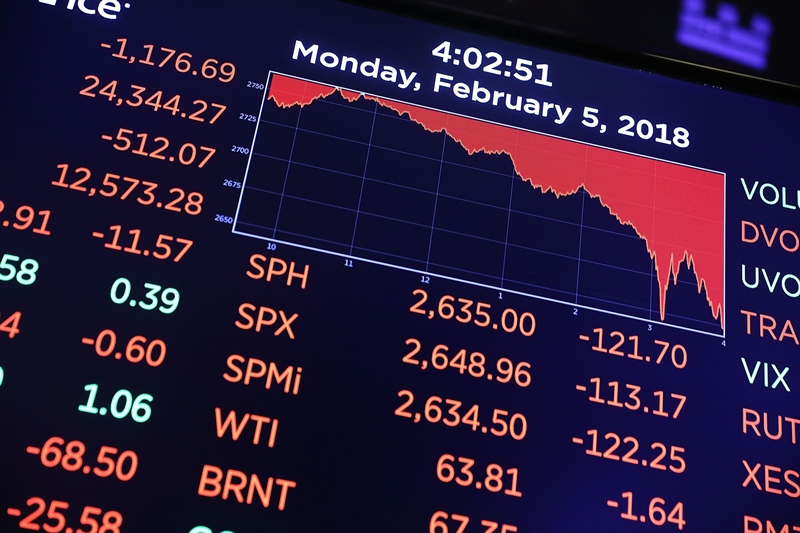
Stocks are down dramatically so far this month, and major index-tracking ETFs such as the S&P 500 SPDR (SPY) and SPDR Dow Jones Industrial Average (DIA) dipped into correction territory, traditionally defined as a decline of 10% or more from the recent highs. The culprit is the recent spike in interest rates.
Ten-year US Treasuries have risen to 2.85%, their highest point in four years (Figure 1), thanks primarily to the strong U.S. economy, where low unemployment and rising wages signal the possible return of inflation. Add to this news that the federal deficit is pushing towards $1 trillion for fiscal 2018, up from $666 in fiscal 2017, and it is no wonder that interest rates are up!
Figure 1: 10-Yr U.S. Treasury Rates
January 1, 2013–February 9, 2018
 |
Source: Federal Reserve Bank of St. Louis
Investors may be overlooking one factor that can offset higher interest rates
Investors are right to worry about the impact of higher interest rates—and the threat of still higher rates down the road—on stock prices. All else being equal, few factors are as destructive to stock valuations as higher interest rates, which can easily overwhelm otherwise positive news on the economy and corporate profits. But there is one factor that investors may be overlooking that can offset the negative impact that higher interest rates would otherwise have on stock prices.
Before we discuss this factor, let’s briefly review why higher interest rates are so detrimental to stock prices. Recall one of the most fundamental equations to stock valuation:
Figure 2: Dividend Discount Model
 |
where D is the annual dividend, r is a discount rate and g is the growth rate of dividends. P is the stock price that results from the interplay between the other three variables and is supposed to reflect a stock’s “intrinsic value.” As a practical tool the Dividend Discount Model has its shortcomings but bear with us a moment; the theory is what’s important here.
The discount rate r is determined by the risk-free rate—generally US Treasuries—and some relatively constant value representing an “equity risk premium.” Whatever the correct number for the equity risk premium, higher Treasury rates equal a higher discount rate.
Both the discount rate r and the growth rate g are expressed as percentages, with typically only a few percentage points between them. Whatever that number is, because it is always less than one it has the effect of multiplying the numerator, D.
For example, if the difference between r and g is 5%, that is equivalent to a multiple of 20x (i.e., 1÷(0.05) = 20). If the difference between r and g grows to 6%, the multiple drops to 16.7x. That’s a 16% decline in intrinsic value from just a one percentage point increase in the difference between r and g.
That sensitivity to small changes in hard-to-estimate values for r and g is one reason the Dividend Discount Model isn’t always useful as a practical valuation tool, but it also helps explain why the market is having such difficulty pricing stocks for higher interest rates.
The long terms EPS growth forecast for S&P 500 firms has been on an uptrend
What the market may be overlooking however is that the growth rate g has also been rising. Specifically, the consensus long term EPS growth forecast for S&P 500 firms has been on an uptrend since late 2016, reversing the downtrend that had been in place (Figure 3). Since the 2016 presidential election, the aggregate long-term earnings growth rate for the S&P 500 has risen from 9.4% to 10.6%, an increase of 120 basis points.
Figure 3: Long Term EPS Growth Rate, S&P 500 Firms
 |
Source: FactSet and ETF Research Center
For our purposes, long-term earnings growth is a reasonable proxy for long term dividend growth, since earnings are what support dividend payments and since the payout ratio for the S&P 500 has remained in the low- to mid-thirties for nearly two decades (except during recessions when the payout ratio increases because earnings are depressed.).
We should acknowledge that the level of the consensus forecast for long term growth is almost certainly too optimistic; since 1950 the actual growth rate for earnings has been 6.5% annually. Nonetheless the direction and change in forecasts produced by thousands of sell-side analysts is significant, particularly the spike following passage of tax reform. It signals that the folks who follow companies most closely—as well as the managements who often feed forecasts to those analysts—believe that long-term growth opportunities have increased by more than 100bp per year. And that’s huge.
DDM suggests faster long term EPS growth more than offsets higher interest rates so far
Over that same time frame, the yield on 10-year Treasuries has risen approximately 70bp. This suggests that the r–g term in the Dividend Discount Model has become smaller, which implies that dividends deserve a higher multiple, not the reduced figure that markets are struggling to settle upon.
Obviously, models such as this represent only one view of how stocks should be valued, and investors are attempting to evaluate a lot of moving parts. But at least in theory stocks should take higher interest rates in stride if the reason for those higher rates is faster growth. In this case, we are talking not just about faster GDP growth for a few quarters, but faster earnings growth for the long term.
What do you think? Is faster EPS growth enough to offset higher interest rates?





